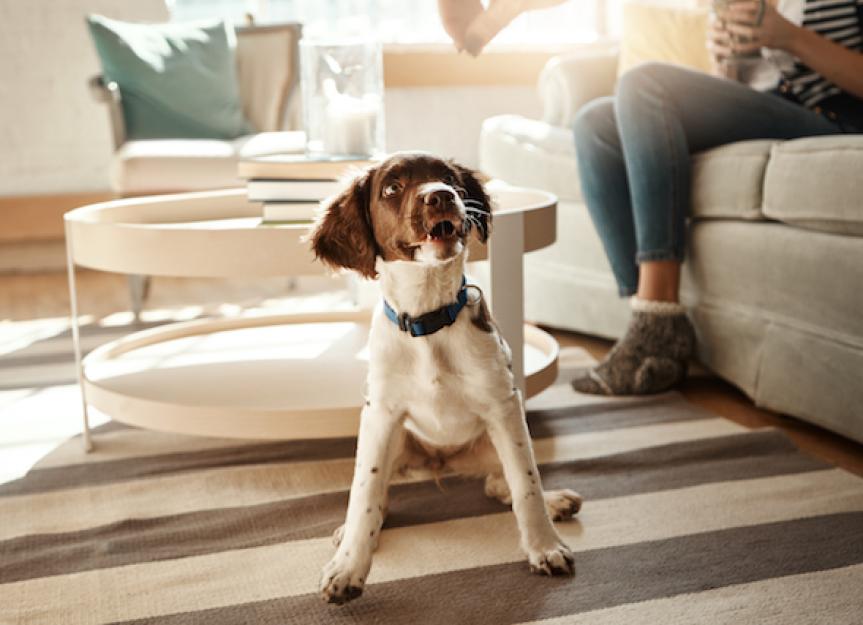5 Ways Collars Can Harm Your Dog
by Lindsay Lowe
Collars are a vital part of dog ownership. They allow pet parents to walk their pup on a leash and they provide a place to hang ID and vaccination tags. However, if used in the wrong way, collars can lead to serious or even fatal injury. Here are five ways collars can potentially harm your dog, along with some tips for safe, responsible collar use.
Strangulation
If used in the wrong way, collars can put your dog at risk of strangulation.
“A dog … can jump up and snag their collar on a fence post or a window latch,” which can lead to suffocation, says Dr. John Pacy, owner of Healthy Pets House Calls, a mobile veterinary service in Palm Beach County, Florida. Hanging tags can also get caught on crates and other objects and cause choking, he says.
Even a well-fitting collar can be dangerous if used to tie up a dog in the backyard, says Dr. Barbara Hodges, a veterinary advisor with the Humane Society Veterinary Medical Association. She says she has heard of dogs who tried to jump fences while tied on a long leash and ended up hanging themselves with their collar.
Limb or Mouth Injuries
Apart from strangulation hazards, a collar can present other serious physical risks, especially if it’s too loose. For example, if a pet is “scratching its ear and the collar is loose, their back leg or their front leg could get stuck inside the collar, looped through,” Hodges says. “It can lead to a limb breaking.” She has also seen dogs get their teeth or tongue stuck in a too-loose collar while grooming themselves, which can lead to broken teeth and other mouth injuries.
To avoid both physical injury and strangulation, Pacy recommends breakaway-style collars, which are designed to snap apart when pressure is applied to the buckle. He has seen breakaway collars prevent many potentially fatal injuries, both among his clients and his own dogs.
Skin Problems
领,太紧也会有害a dog, and even a “moderately tight” collar can lead to skin irritation, Hodges says. Collars that are too tight can cause hair loss, and the skin in those areas can be more prone to infection, she says.
In extreme cases, a very tight collar can cut into a dog’s neck. This can happen in cases of neglect when a puppy-sized collar is left on a growing dog, Pacy says.
In general, to protect your pup’s neck, Hodges recommends rotating between a few different collars and regularly checking that they still fit well. She also recommends letting your dog sleep at night without a collar to give your pet’s skin a chance to air out.
Neck Damage
Traditional collars can harm a dog’s neck if it pulls hard on the leash or if a pet owner uses the collar to pull the dog around.
“You are potentially damaging the dog’s neck by jerking it,” Hodges says. “The neck is a very, very sensitive area.”
Repeated stress on the neck can even lead to long-term medical issues—including damaging the thyroid glands and tissues around the neck area and salivary glands, she says. A chest harness can be a safer alternative to neck collars that put a lot of strain on a dog’s neck, she adds.
General Discomfort
即使一个衣领不导致任何serious injuries, the wrong collar can simply be irritating for a dog. Pet owners should use common sense when collar shopping. If a collar looks rigid and uncomfortable, it probably is, Hodges says.
“If you have a really stiff collar on a dog, it would be like if we were wearing some piece of jewelry that was really tight,” she says. “It’s going to impede their mobility and they’re not going to be a happy camper.”
Hodges says she has many clients who wonder why their dog is constantly scratching his head and neck. Of course, scratching can be due to a number of factors, but it can also be due to low-grade irritation from a collar, she says.
Collar Safety Tips
When sizing a collar, make sure you can fit your thumb between the collar and the dog’s neck.
“If I can get my whole hand in there, it’s too loose, and if I can’t even wedge a finger in there, it’s too tight,” Hodges says.
Also, keep in mind that a collar can fit differently depending on the position of the dog.
“If the dog sits down or rolls over, their skin and body fat is redistributed,” Hodges says. “A collar that sits perfectly when it’s standing up may be too tight when the dog reclines.”
Finally, while collars are vital for holding ID tags, make sure your dog is also microchipped so that when you remove your pup’s collar at night, which Hodges recommends, the dog can still be identified in an emergency.
Help us make PetMD better
Was this article helpful?
